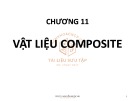
Transport and Communications Science Journal, Vol 76, Issue 01 (01/2025), 114-123
114
Transport and Communications Science Journal
STRENGTH DEVELOPMENT AND COEFFICIENT OF THERMAL
EXPANSION OF HIGH-STRENGTH CONCRETE USING SILICA
FUME
Nguyen Duy Tien1, Hoang Viet Hai1*, Tran Duc Tam2, Do Anh Tu1
1University of Transport and Communications, No 3 Cau Giay Street, Hanoi, Vietnam
2 Hoa Binh Department of Transport, Hoa Binh, Viet Nam
ARTICLE INFO
TYPE: Research Article
Received: 04/10/2024
Revised: 26/12/2024
Accepted: 10/01/2025
Published online: 15/01/2025
https://doi.org/10.47869/tcsj.76.1.10
* Corresponding author
Email: hoangviethai@utc.edu.vn
Abstract. Silica fume as a partial replacement for cement in high-strength concrete has been
the focus of numerous studies. However, the impact of substituting cement with silica fume
in concrete mixtures on the mechanical and thermal properties of high-strength concrete
remains insufficiently explored. Silica fume, characterized by its high pozzolanic activity and
ultra-fine particles, is incorporated into concrete mixtures to enhance their mechanical
properties and durability. The research examines the influence of varying silica fume content
on the compressive strength and CTE of high-strength concrete. In the present study, concrete
specimens with a water-cement ratio of 0.32 were prepared, with 5%, 10%, and 15% of the
cement replaced by silica fume. Experimental results demonstrate that silica fume
significantly improves compressive strength, particularly at early ages, starting from 7 days.
However, the CTE of these mixtures is not significantly affected, with the average values
varying slightly, ranging from 8.95 to 9.93 × 10⁻⁶/°C. This study contributes to further
clarifying the role of silica fume in concrete mixtures and its effect on the CTE.
Keywords: Strength development, Silica fume, Coefficient of thermal expansion, High-
Strength Concrete.
@2025 University of Transport and Communications















